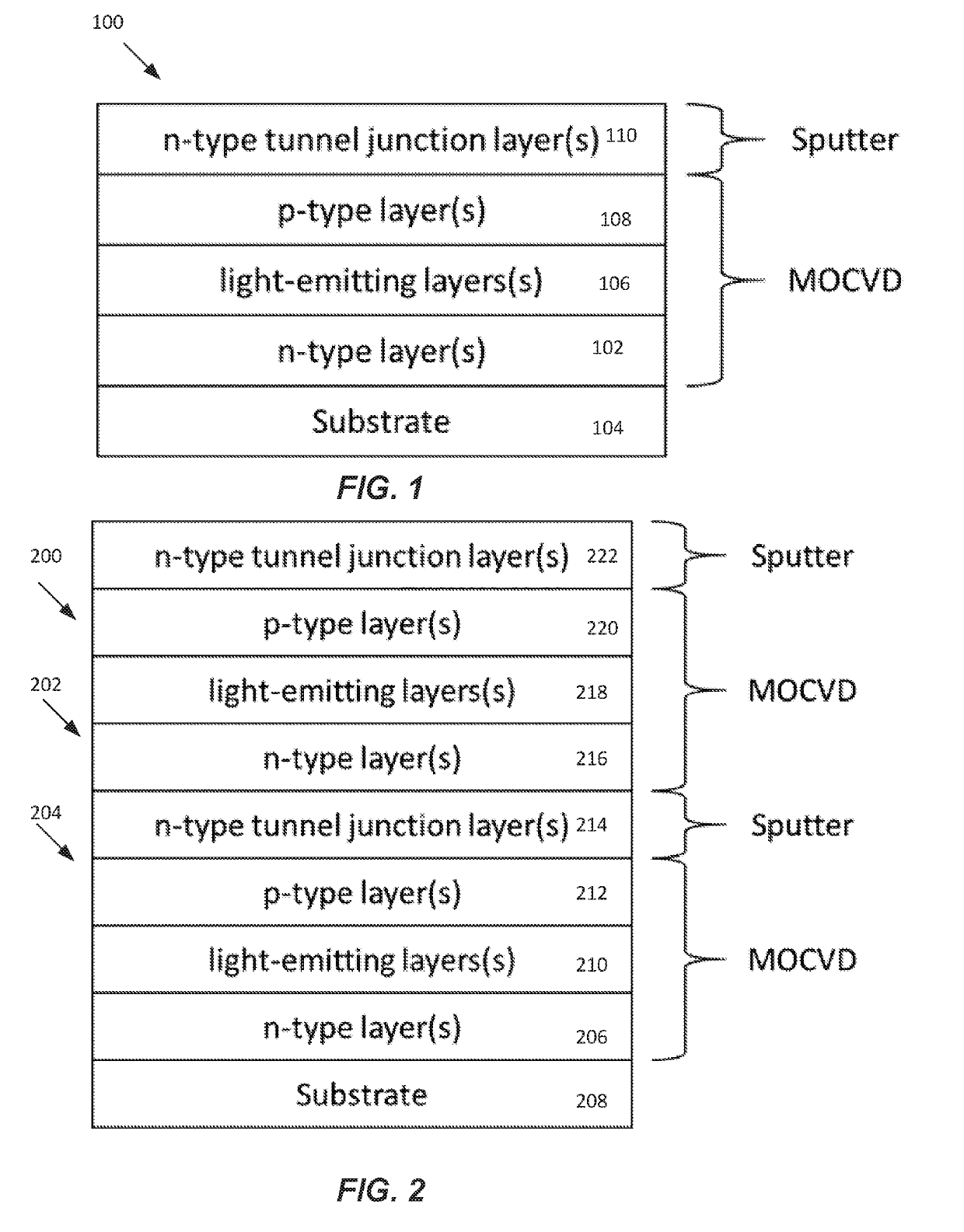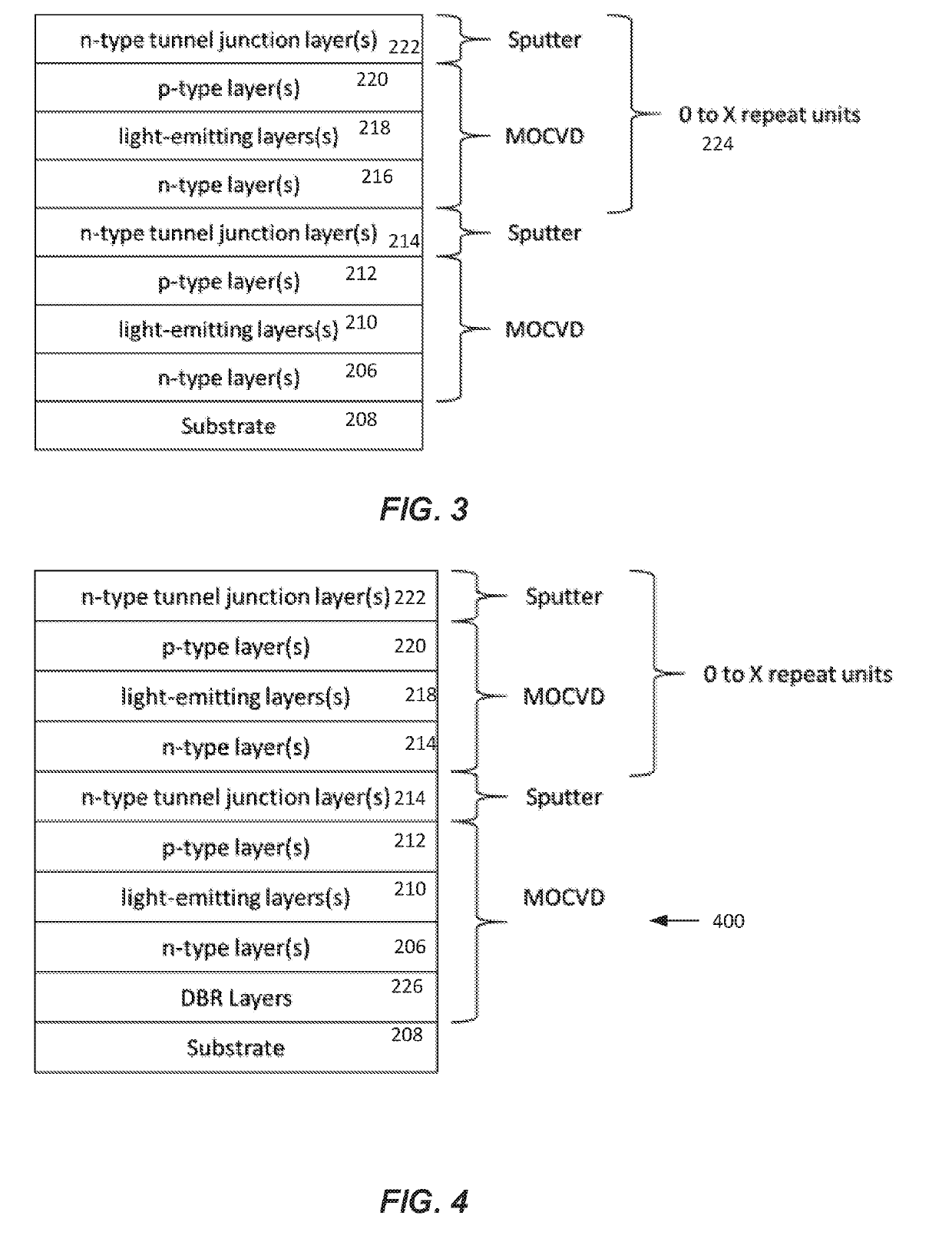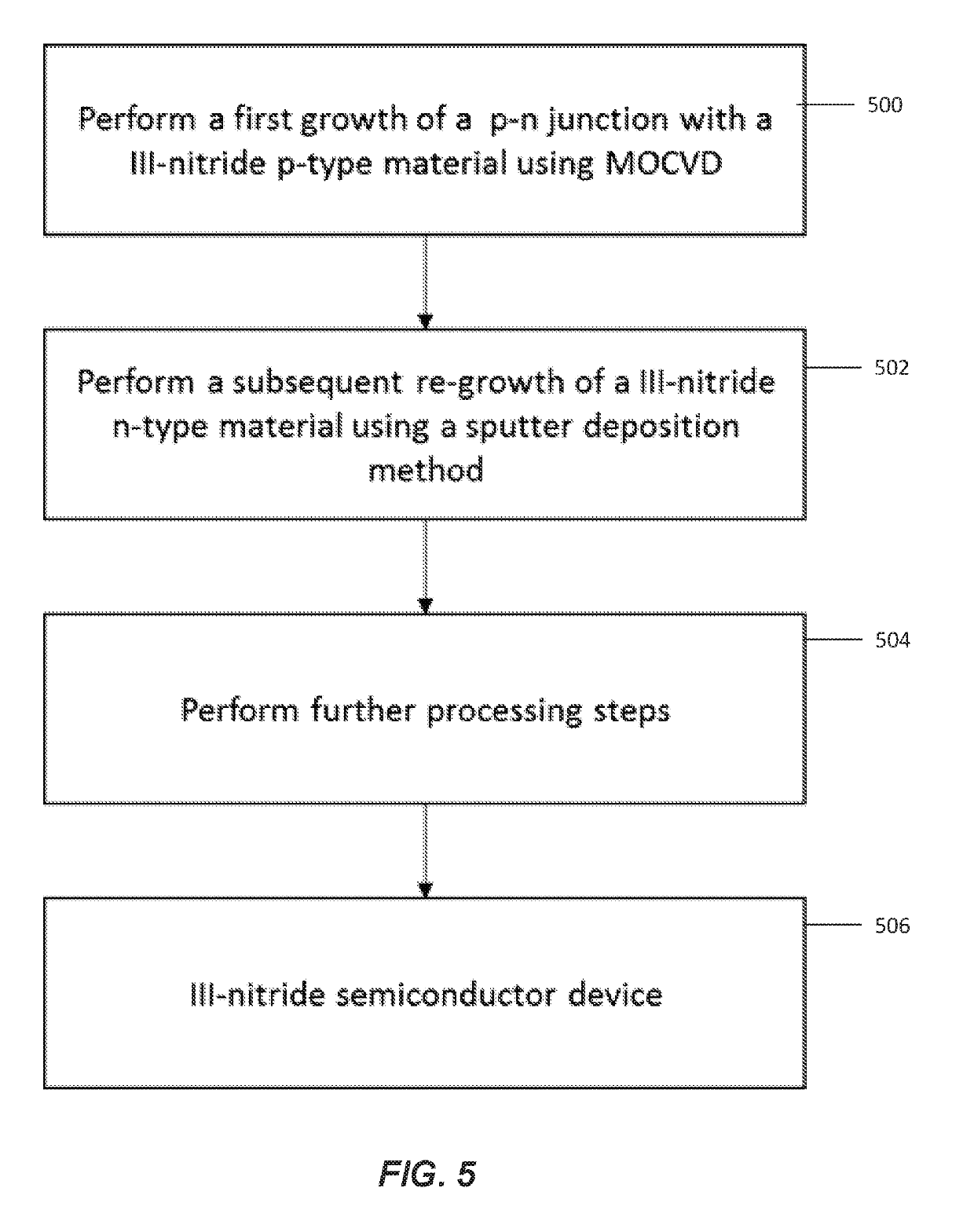Methods for fabricating iii-nitride tunnel junction devices
a tunnel junction and nitride technology, applied in semiconductor/solid-state device manufacturing, semiconductor devices, electrical equipment, etc., can solve the problems of low hole concentration and mobility, inability to use p-gan as a current spreading layer, and difficulty in contact with nitride (p-gan) electrically, so as to increase efficiency, reduce the operating voltage of these devices, and increase the performance of eelds and vcsels
- Summary
- Abstract
- Description
- Claims
- Application Information
AI Technical Summary
Benefits of technology
Problems solved by technology
Method used
Image
Examples
Embodiment Construction
[0058]In the following description of the preferred embodiment, reference is made to the accompanying drawings that form a part hereof, and in which is shown by way of illustration a specific embodiment in which the invention may be practiced. It is to be understood that other embodiments may be utilized and structural changes may be made without departing from the scope of the present invention.
TECHNICAL DESCRIPTION
[0059]A. Physical Vapor Deposition (e.g. Sputter Deposition) Method for III-Nitride Tunnel Junction Devices
[0060]As noted above, the present invention comprises a sputter deposition method for r-nitride tunnel junction devices that uses MOCVD to grow one or more light-emitting or light-absorbing structures and sputter deposition is used to grow one or more tunnel junctions.
[0061]Tunnel junctions grown by MOCVD are difficult to achieve, because the as-grown Mg-doped layers are insulating due to hydrogen passivation, and are typically activated by a post growth anneal. If ...
PUM
 Login to View More
Login to View More Abstract
Description
Claims
Application Information
 Login to View More
Login to View More - R&D
- Intellectual Property
- Life Sciences
- Materials
- Tech Scout
- Unparalleled Data Quality
- Higher Quality Content
- 60% Fewer Hallucinations
Browse by: Latest US Patents, China's latest patents, Technical Efficacy Thesaurus, Application Domain, Technology Topic, Popular Technical Reports.
© 2025 PatSnap. All rights reserved.Legal|Privacy policy|Modern Slavery Act Transparency Statement|Sitemap|About US| Contact US: help@patsnap.com



